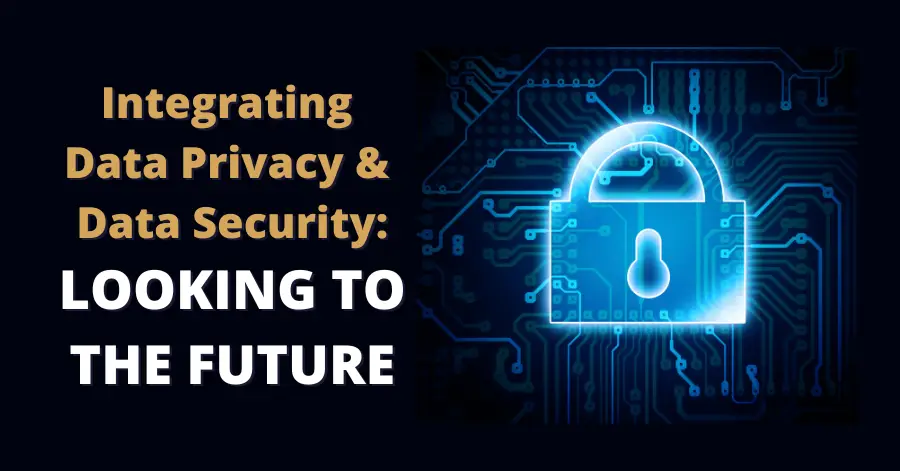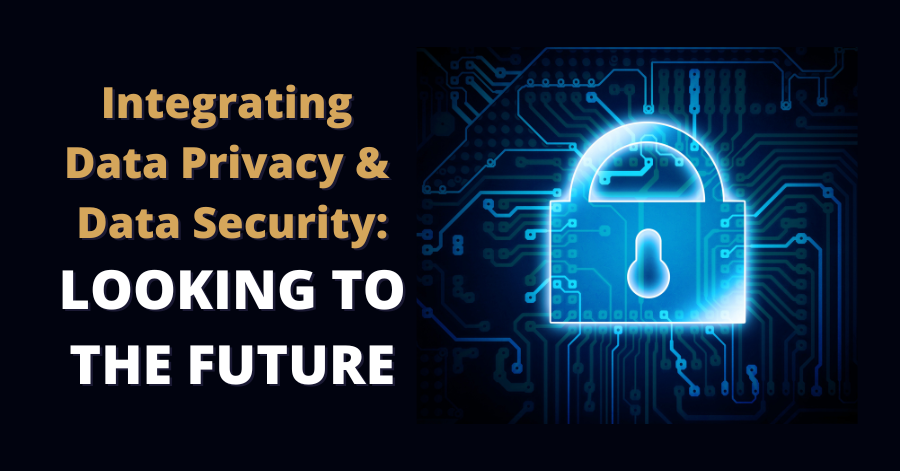Integrating Data Privacy & Data Security: Looking to the Future


Data is the new oil. However, protecting an oil rig from marauders is a more straightforward process than safeguarding data. Data protection involves protecting data from falling into malicious hands as well as protecting the privacy of the individuals it is gleaned from. This gives rise to two distinct fields – data security and data privacy. Together they form the backbone of maintaining digital trust and compliance.
With AI becoming increasingly intertwined in business operations, personal and sensitive information must be both protected and ethically managed.
Data Security
Data security prevents unauthorized access to data via breaches and other cyber threats. Cybersecurity specialists use measures like firewalls, encryption, and secure access controls to maintain data integrity, confidentiality, and availability.
Data Privacy
Data privacy differs from data security in that it focuses on direct interactions with individuals to obtain their consent for collecting and using their data. This includes informing them about the types of personal information being collected, the purposes for which it will be used, and the entities with whom it will be shared. Additionally, data privacy requires compliance with various applicable laws and regulations worldwide.
Challenges Faced While Ensuring Data Privacy & Security
The road to ensuring data privacy and security is fraught with challenges, the biggest ones being:
- Complex regulations: Diverse privacy laws worldwide require security plans to be designed by professionals who understand data privacy compliance requirements.
- Evolving threat landscape: Cybercriminals continuously adapt their tactics, so organizations need to be proactive about updating security measures.
- AI data volumes: AI systems and IoT devices collect vast amounts of data, which can make ensuring compliance and data protection difficult.
AI, Data Privacy, & Data Security
AI and data privacy have a paradoxical relationship. While AI can enhance privacy (more on that later), it can also make individuals vulnerable to exposure, as many AI models need to be trained on large amounts of data. Furthermore, the opacity of some AI systems, known as “black box” models, can make it difficult to trace how decisions are made or whether personal data is handled in compliance with privacy laws. Researchers from Stanford University are concerned that data privacy laws do not sufficiently cover AI training models. They also point out that AI can infer sensitive information from seemingly unrelated data, allowing individuals to be identified, thereby increasing the potential for the misuse of personal data.
From a data security point of view, the enormous amounts of data needed to train AI models make them vulnerable to cyber-attacks.
The Intersection Between Data Security & Data Privacy
Cybersecurity and data privacy work toward the same goal of ensuring that sensitive information remains secure and is used in ways that align with ethical and legal guidelines. For instance, encrypting customer data protects it from breaches (cybersecurity) while obtaining user consent for data processing upholds privacy standards. A robust cybersecurity framework is a prerequisite for maintaining data privacy; without adequate security, privacy efforts are undermined by vulnerabilities.
For businesses, real-world applications of this intersection include:
- Identity and access management: This involves limiting access to sensitive data to authorized personnel to keep it secure and align with privacy requirements.
- Incident response planning: A strong cyber threat response plan helps protect data privacy by ensuring action can be taken immediately.
- Data minimization: Data hoarding severely affects data protection and privacy. Minimizing data collected to strictly necessary data reduces privacy risks and minimizes the attack surface for cyber threats.

The Security by Design Approach
Integrating security measures into the architecture of systems and processes from the beginning instead of being tacked on as an afterthought is known as the security-by-design approach. It is a proactive way of ensuring your data privacy program has data security measures baked into it right from the planning stage to its deployment. Doing so also helps meet regulatory requirements like the GDPR’s mandate for “data protection by design and by default”.
Average users can take several fundamental cybersecurity steps to protect their data. Many emerging technologies can help strengthen the security by design approach:
- AI tools: AI can be used in cybersecurity measures to detect, contain, and resolve security breaches in real-time. It can also enforce compliance by monitoring how data is used and informing concerned people about potential violations.
- Zero trust architecture: This approach ensures that every access request is verified, reducing security breaches and unauthorized data usage. AI can help reinforce this by streamlining access to sensitive data, scanning documents and emails for sensitive information, and enforcing multi-factor authentication, among other measures.
- Privacy-enhancing technologies: Tools like differential privacy and homomorphic encryption enable data analysis without compromising individual privacy.
Cybersecurity and data privacy are vital for building trust and ensuring compliance in a digital-first era. Organizations need to adopt a holistic approach that protects sensitive information and fosters a culture of transparency and accountability.
If you want to know how to integrate security measures into your data privacy plan, our privacy and security experts are here to help. Get in touch with us today!





